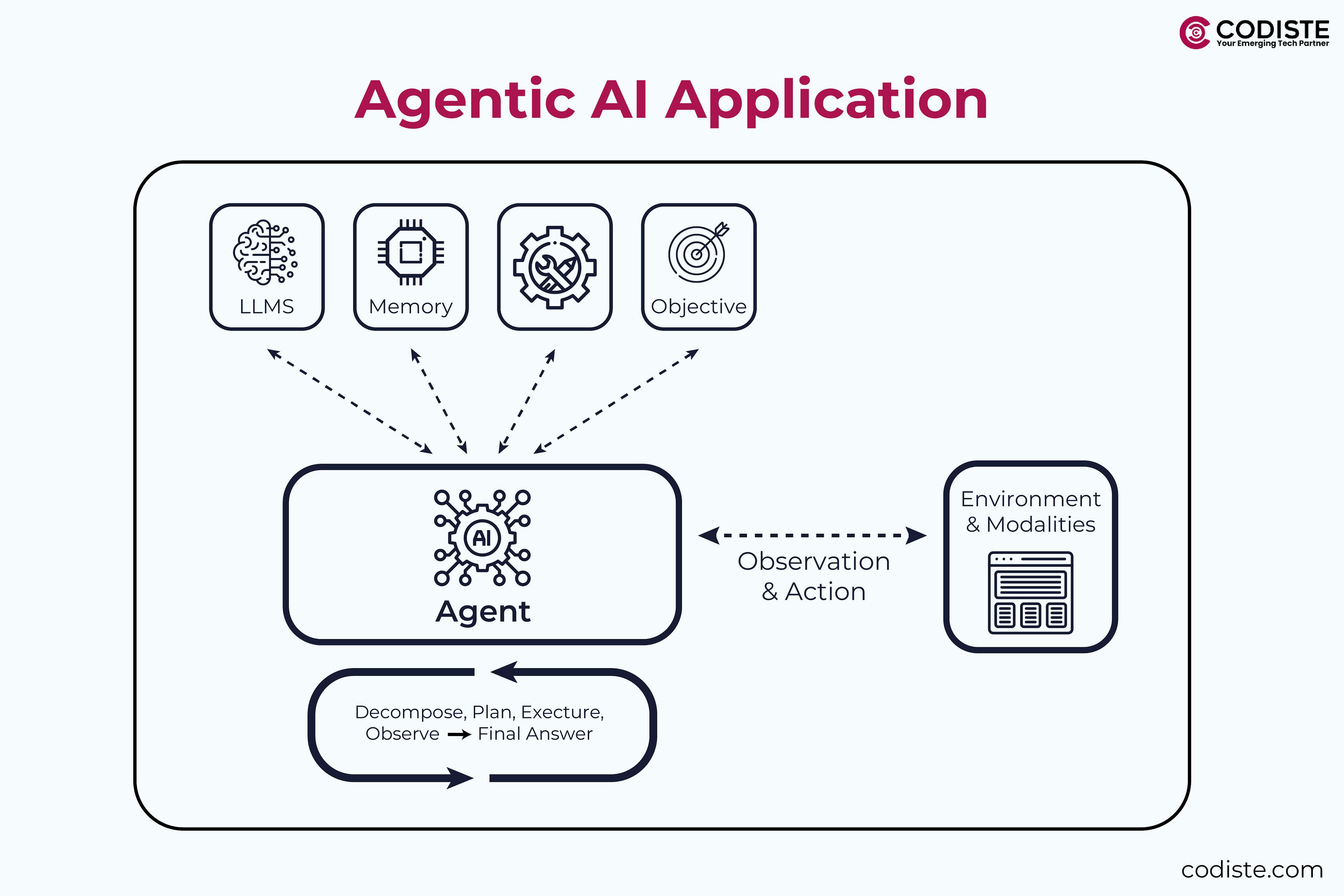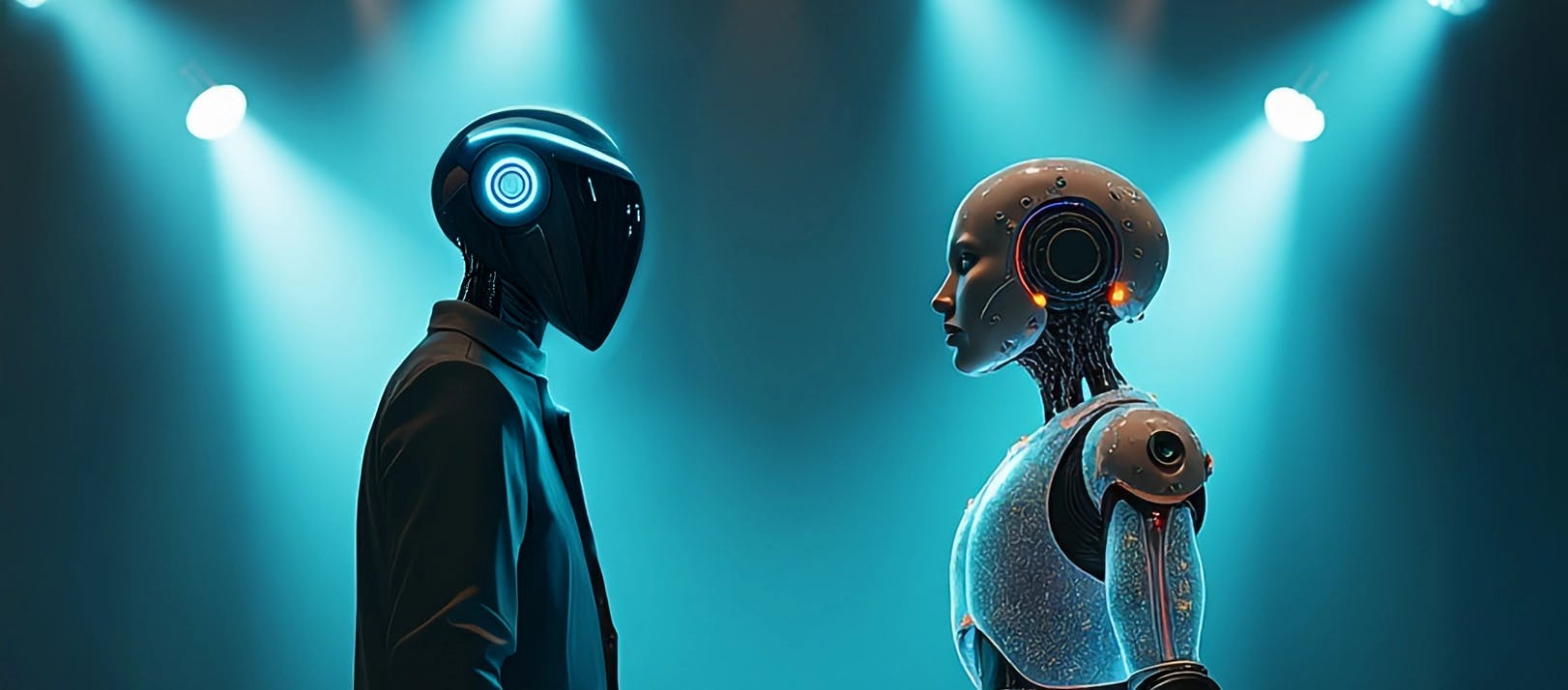
,
From its humble beginnings as rule-based systems to its current state as complex, autonomous agents able to carry out various activities independently, artificial intelligence (AI) has matured tremendously. An enormous step forward in the study of artificial intelligence, this change proposes the arrival of agentic AI applications.
The emergence of agentic AI in the current AI market is highly anticipated for its revolutionary potential to transform and upgrade various industries, improve human capacities, and address intricate global issues. For better strategic decision-making in the face of growing AI integration, enterprises need to have a firm grasp on the strengths and weaknesses of AI.
With the arrival of this new era comes the need to acknowledge the possibilities and obligations linked to the development of autonomous systems. Maximizing the societal benefits of these technologies requires their development and deployment to be carried out ethically and responsibly.
Understanding the fundamental differences between agentic AI vs traditional AI applications is crucial for navigating the intelligent systems of the future, and that is precisely what this blog will do.
What are Agentic Applications vs Traditional AI applications?
AI applications are systems designed with the intent to perform tasks based on specific predefined algorithms. Agentic AI applications, meanwhile, are in contrast to conventional applications because they can leverage advanced machine learning capabilities to act independently. These AI agent applications can learn from interactions, make decision making easier, and outperform complex tasks without direct human involvement.
Importance of Understanding the Distinction Between Traditional AI Applications and Agentic AI Applications
Traditional AI Applications:
The emergence of AI software evolution in the mid 20th century, with early algorithms and computing power developments, set the stage for today's traditional AI growth. Over the decades, these applications have evolved, leveraging advancements in machine learning and data processing.
Traditional AI applications have played a pivotal role in the evolution of artificial intelligence, serving as the foundation upon which today's advanced systems are built. Often referred to as narrow AI, they are designed to perform specific tasks within a limited scope. Remaining fundamentally focused on predefined tasks rather than exhibiting general intelligence.
Core Characteristics of AI Applications
- Task-Specific Design (Narrow Focus)
Traditional AI is created to solve specific problems narrowly; traditional AI excellence is limited to particular areas. - Input-Output Relationship (Reactive Systems)
In this type of AI application development, the highlight is a straightforward input-output relationship. They react to specific inputs and generate outputs based on predefined rules or learned patterns. - Human Guidance Requirements
Traditional AI systems are human-dependent for operation and development. Explicit instructions with ongoing supervision are essential to ensure proper functioning.
A Few Examples of Traditional AI Applications
- Recommendation Systems
These systems can analyze user behavior and preferences and suggest the best recommendations. Examples include Netflix's movie recommendations and Amazon's product suggestions. - Image Classifiers
With the help of machine learning algorithms, these systems can identify and categorise images. They are widely used in various fields. Examples include social media (e.g., tagging photos). - Chatbots
Most used and engaged entity based on pre-programmed conversation scripts. They can answer frequently asked questions but struggle with complex or specific inquiries.
With everything discussed above, it is evident that traditional AI limitations have laid the groundwork for developing more sophisticated systems. While they are effective in their specific roles, understanding how agent-based applications work is essential to differentiate and choose what is best.
What are Agentic AI Applications?
The continuous evolution of artificial intelligence has given us agentic AI. This autonomous system emerged as a groundbreaking development characterized by its ability to operate autonomously and adapt to complex environments. Understanding the defining features of agentic AI is essential for grasping its transformative potential.

Agentic AI applications can independently act, solve multi-step problems and adapt in real time. As more advanced machine learning, large language models (LLMs), and cognitive computing have emerged, so has the emergence of agentic AI. This reflects a shift from traditional AI to systems that are more capable, more sophisticated, and more goal-oriented in behavior.
Core Characteristics of Agentic AI:
- Ability to Plan and Execute Multi-Step Processes
Agentic AI can plan and execute multi-step processes by breaking down complex tasks into manageable steps and strategizing their actions based on the current context and desired outcomes. - Decision-Making Capabilities
Agentic AI is significantly advanced; it utilizes sophisticated reasoning and iterative planning to evaluate options and make informed choices by leveraging vast amounts of data and learning from past experiences. Agentic AI easily adapts to strategies, optimizes performance, and achieves goals more efficiently. - Goal-Directed Behavior and Autonomy
Agentic AI can pursue objectives autonomously. This autonomy allows these systems to operate with minimal supervision, making them suitable for various applications, from personal assistants to complex industrial processes. - Environment Awareness and Adaptability
These systems are exclusively designed to be environmentally aware and adaptable, sensing changes in their surroundings and adjusting actions accordingly.
Some Examples of Agentic AI Applications
- Autonomous Assistants
Advanced virtual personal assistants can manage tasks like scheduling, reminders, and information retrieval without constant human input, learning user preferences over time. - AI Agents in Research
Agentic AI can autonomously analyze data, generate hypotheses, and even conduct experiments, significantly accelerating the pace of discovery. - Robotic Process Automation (RPA)
Automating complex workflows in business processes allows organizations to improve efficiency and reduce human error.
Leap into the future with AI agents.
Head-to-Head Comparison Between Traditional and Agentic AI Applications
As artificial intelligence evolves, understanding the differences between traditional AI and agentic AI applications becomes increasingly important. With this head-to-head comparison, we will highlight the key distinctions that define each type of AI, showcasing their unique capabilities and functionalities.
These key differences are essential to help navigate the path to choosing AI for your business needs. While traditional AI is a valuable tool for specific tasks, agentic AI application development represents a step towards more autonomous and adaptable systems.
Technical Implementation and Considerations
Implementing agentic AI applications involves many technical considerations to ensure reliability, effectiveness, and scalability. This section outlines the need for infrastructure development, framework requirements, evaluation metrics, and particular challenges that agentic AI application development possesses.
Development Frameworks and Approaches
The proper development framework is essential for building agentic AI systems. Various frameworks and methodologies can facilitate the process:
- Machine Learning Frameworks
Popular frameworks such as TensorFlow, PyTorch, and Keras provide the tools necessary for designing, training, and deploying neural networks. These frameworks support complex architectures, enabling developers to build agentic systems capable of learning and adapting. - Reinforcement Learning
This is relevant for agentic AI, where agents learn to make decisions by interacting with their environment. Frameworks like OpenAI Gym allow developers to simulate environments and train agents using reinforcement learning techniques. - Multi-Agent Systems
For applications that involve multiple agents working together, frameworks such as JADE (Java Agent Development Framework) can be utilized. These frameworks facilitate communication and collaboration between agents to achieve shared goals.
Infrastructure Requirements
Implementing agentic AI requires a robust infrastructure to support the computational demands associated with training and deploying these systems:
- Cloud Computing
Leveraging cloud platforms like AWS, Google Cloud, or Microsoft Azure can provide the computational power and scalability. These platforms offer access to GPUs and TPUs, essential for efficiently training complex models. - Data Storage and Management
Agentic AI systems often rely on large datasets for training. Therefore, a reliable data storage solution, such as a data lake or a distributed database, is crucial for managing and processing data effectively. - Real-Time Data Processing
Many agentic applications require real-time data processing capabilities. Implementing tools like Apache Kafka or Apache Spark can facilitate the ingestion and analysis of streaming data, allowing the AI to adapt dynamically to changing conditions.
Evaluation Metrics and Testing Methodologies
Evaluating the performance of agentic AI systems is critical to ensure their reliability and effectiveness. Key metrics and testing methodologies include:
- Performance Metrics
Metrics such as accuracy, precision, recall, and F1 score are essential for assessing the performance of machine learning models. Additional metrics like decision-making speed and adaptability are also crucial for agentic systems. - Simulation Testing
Before deployment, agentic AI systems should be tested in simulated environments to evaluate their behavior under various scenarios. This testing can help identify potential issues and refine decision-making processes. - A/B Testing
Implementing A/B testing allows developers to compare the performance of different models or strategies in real-world scenarios. This approach can help determine the most effective configurations for agentic applications.
Unique Challenges in Agentic AI Development
Developing agentic AI applications comes with its own set of challenges that must be addressed:
- Complexity of Decision-Making
The ability of agents to make independent decisions introduces complexity in model design and training. For your AI agent to make contextually appropriate choices, you must carefully consider the algorithms used. - Ethical and Bias Concerns
Keeping ethical considerations in mind and addressing potential biases while training data to ensure transparency in decision-making is crucial to building trust in these systems. - Safety and Reliability
The safety and reliability of agentic applications are paramount in high-stakes environments like healthcare or autonomous vehicles. Rigorous testing and validation processes are necessary to mitigate risks. - Adaptability and Learning
Designing systems that can learn and adapt effectively over time, implementing robust continuous learning mechanisms while preventing issues such as catastrophic forgetting.
Technical implementation considerations play a critical role in the successful development of agentic AI applications. By selecting appropriate development frameworks, establishing robust infrastructure, utilizing effective evaluation metrics, and addressing unique challenges, organizations can wield the full potential of agentic AI, simultaneously ensuring the development of effective, reliable, and responsible AI systems.
Conclusion
Although the rise of agentic AI is transforming industries by enabling autonomous systems to learn, adapt, and operate independently, organizations can better infer their needs by understanding the use cases and emerging hybrid models. As agentic AI develops, its impact on business processes and customer interactions will only grow, paving the way for a more intelligent and efficient future. This fact certainly does not nullify the benefits enterprises might get from traditional AI applications.
Together, enterprises can seek a solution that best suits their needs and future scalability options, where AI enhances businesses' capabilities and addresses complex challenges across industries.
The choice is yours whether you select an agentic AI application or a traditional one. It all comes down to one factor: how to proceed with it. In case you are lost, find the best outcome for your business. We have a team of consultants helping enterprises choose the best path to success.
At Codiste, we have amassed expertise by being quite long-standing in the industry. We have mastered the art of product and agentic AI development, showing results that back up what we say. Contact us today.



What is Agentic AI? A Beginner's Guide to the Future of Software Development
Know more
AI in Customer Service: Trends & Predictions for 2025
Know more
